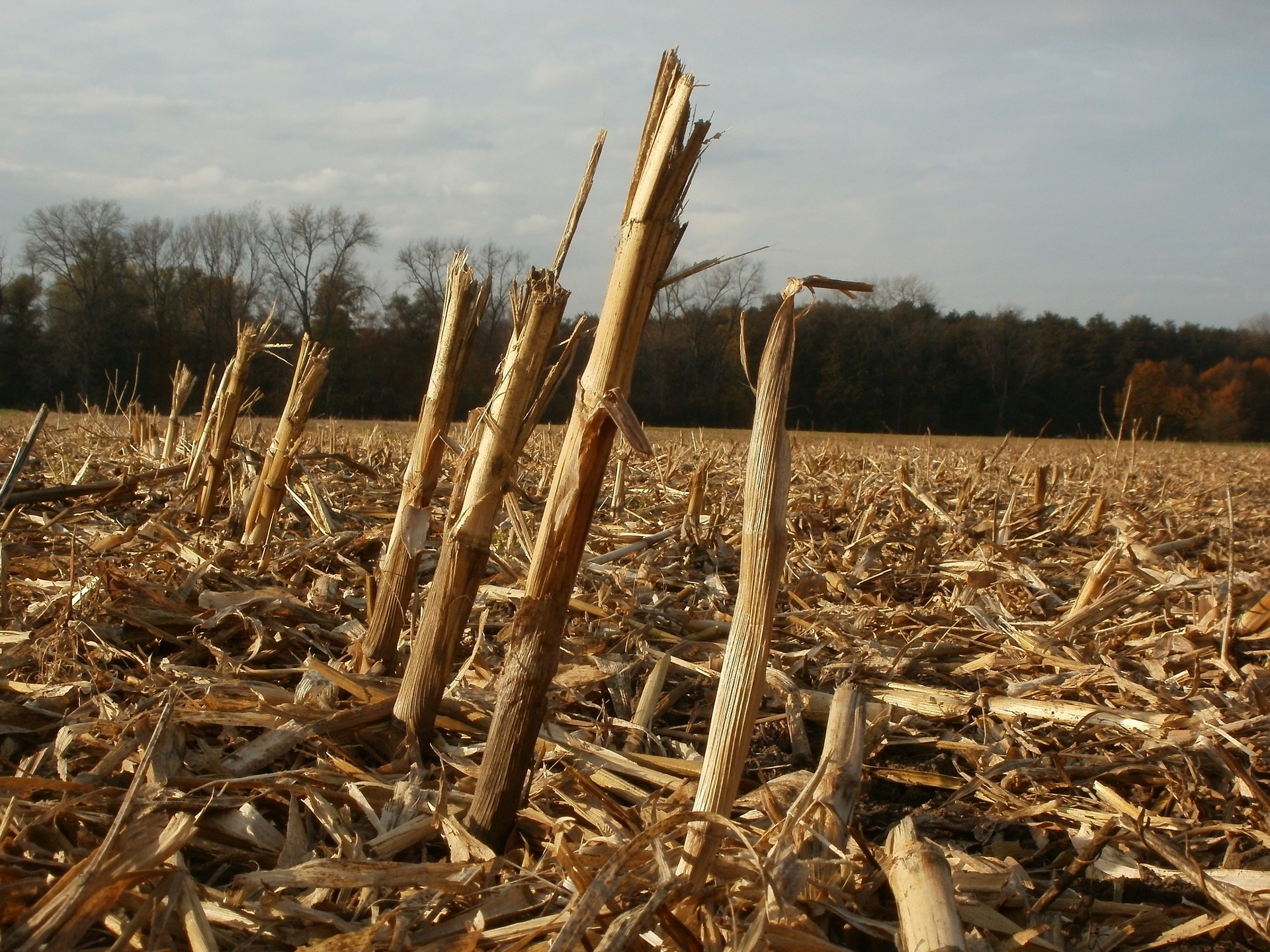
Finding economical feed sources that provide adequate nutrition is a major concern for producers. Grazing cornstalks offers producers a great opportunity to utilize a by-product that might otherwise go to waste. Turning cattle out after harvest allows the corn farmer and cattle producer to work together towards a mutually beneficial goal; the farmer’s fields are cleared of leftover plant matter and the producer can feed his cattle inexpensively.
The quality of feedstuffs will vary depending on several factors, including the weather, how long the stalks have been standing, how much grain is still left, etc.
Here are five tips for making the most of your cornstalk grazing program:
- Know what you’re feeding. Assess the amount of grain remaining following harvest. Do this prior to turning cattle out. Adjustments to supplementation will depend on how much corn is left in the field.
- Support optimum rumen pH. Rumen microbes take time to adjust to the increase in starch in the diet. When microbe populations must shift in composition to process starches, it can take around two weeks for this adjustment to take place. Bloat becomes a concern during this transition, so supporting a proper rumen pH is essential to ensure that there are not major increases in rumen acid (which can lead to microbe die-off and sub-acute ruminal acidosis).
- Be prepared to supplement protein. Cornstalks and grain are low in protein, making it necessary to boost the daily protein intake through supplementation. A non-protein nitrogen (NPN) may need to be used to help increase the breakdown and utilization of proteins. It is important to maintain a proper nitrogen-to-starch ratio to help support microbes and stave off bloat.
- Vitamin A is key. Vitamin A is most abundantly present in green plant matter – for cattle, lush pastures are the main source of naturally-derived vitamin A. Unfortunately, both cornstalks and grain are markedly low in vitamin A. It will be necessary to supplement vitamin A on a daily basis to cattle grazing on cornstalks.
- Provide loose salt and minerals. Cornstalks and grain lack in many essential minerals and the salts needed for the proper functioning of every system in an animal’s body. Phosphorus, for example, is vital for proper digestion, while adequate calcium must be available for lactating cows. Loose salt and mineral supplementation allow for customization depending on regional soil deficiencies and the particular needs of the animals being turned out for cornstalk grazing.
- Consider tubs for supplementation. Tubs offer a great all-in-one solution for the supplementation of cattle. Many offer regional formulas to address specific deficiencies unique to the areas they are formulated for. In addition to salt and mineral supplementation, tubs make it possible to fill in the gaps in the nutritional profile of cornstalk grazing without breaking the bank.
Using cornstalk grazing as an economical way to feed cattle is a great way to take advantage of by-product resources. Establishing that fine balance between affordability and optimum conversion may take a little research and work, but the end result can mean more dollars in your pocket come sale time.
